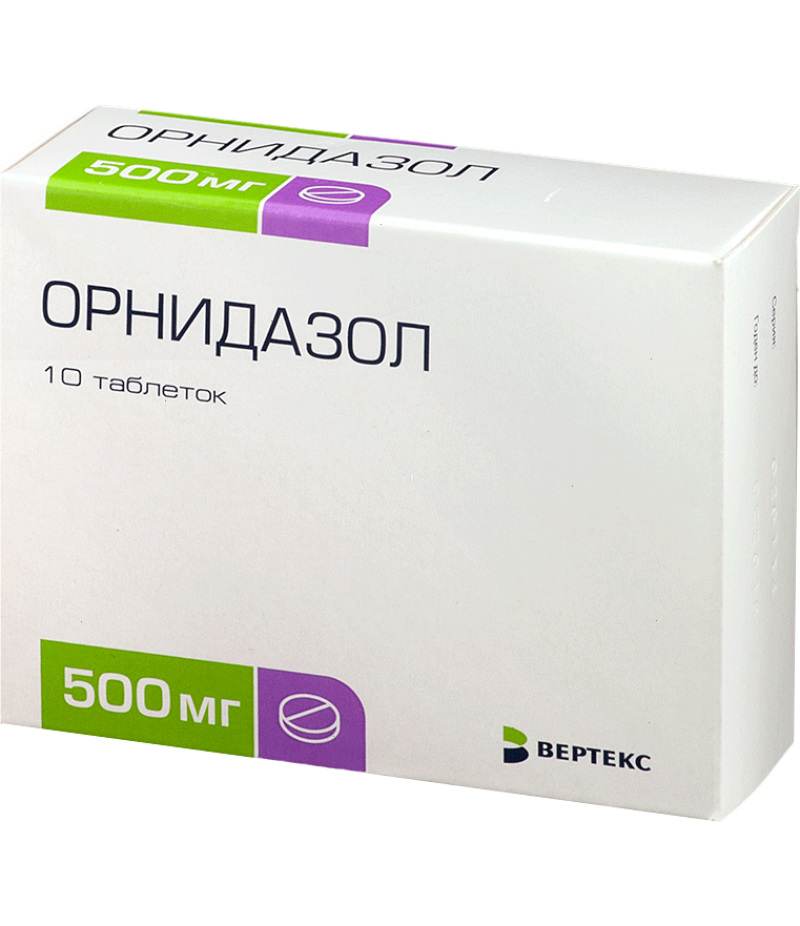Ornidazole tabs 500mg #10
- $10.51
- 3 or more $9.99
- Availability:In Stock
Ornidazole user manualReed more and buy Ornidazole on this pageCompositionThe preparation contains an active ingredient: ornidazole.Additional ingredients: corn starch, povidone, MCC, sodium carboxymethyl starch, magnesium stearat..
Tags: tabs
Ornidazole user manual
Reed more and buy Ornidazole on this page
Composition
The preparation contains an active ingredient: ornidazole.
Additional ingredients: corn starch, povidone, MCC, sodium carboxymethyl starch, magnesium stearate, titanium dioxide, hydroxypropylmethylcellulose, talc and the like.
Form of issue
Ornidazole is produced in the form of tablets, a solution for infusions and vaginal suppositories.
pharmachologic effect
This drug has antiprotozoal and antimicrobial effect.
Pharmacodynamics and pharmacokinetics
This antiprotozoal and antimicrobial agent is a derivative of 5-nitroimidazole. Its action is aimed at biochemical reduction of the 5-nitro group of ornidazole, due to intracellular transport proteins of anaerobic microorganisms and some protozoa. As a result of the reduction, the 5-nitro group of ornidazole interacts with DNA cells of microorganisms, inhibits the synthesis of nucleic acids, having a harmful effect on bacteria.
Thus, the activity of the drug is manifested in a number of known bacteria, obligate anaerobes and Gram-positive microorganisms. In this case, aerobic microorganisms do not have sensitivity to Ornidazole.
This antibiotic is characterized by a good absorption from the digestive tract, with a bioavailability of about 90%. Binding to plasma proteins is 15%.
Metabolism occurs in the liver region by hydroxylation, subsequent oxidation and glucuronidation of the drug. Its components are found in breast milk and tissues, penetrate the GEB and the placenta. Excretion occurs in metabolites in the composition of urine and feces, and part - in unchanged form.
Indications for use
The drug is prescribed for:
trichomoniasis;
amebiasis, for example, amebic dysentery, extraintestinal amebiasis;
a lambliasis;
prevention of infections caused by anaerobic bacteria;
operations in the field of the colon;
treatment of gynecological diseases.
Contraindications
Do not use the drug when:
hypersensitivity;
early pregnancy;
lactation;
childhood.
With caution, the drug is prescribed for the treatment of diseases of the nervous system, epilepsy, multiple sclerosis, liver disease, alcoholism, pregnancy.
Side effects
When treating Ornidazole, side effects can occur in the form of drowsiness, headache, abnormalities of the digestive tract, dizziness, tremor, rigidity of muscles, seizures, fatigue, temporary loss of consciousness, allergic manifestations and so on.
Instructions for use Ornidazole (Method and dosage)
As the instruction on the use of Ornidazole informs, this preparation is presented in several pharmacological forms. Tablets are taken orally, preferably after eating. It is also possible to administer a solution for intravenous administration or vaginal tablets.
Dosage, therapeutic regimen and duration of use depend on the type of disease.
For example, during the treatment of trichomoniasis, tablets may be administered orally administered or intravaginally administered. In this case, the therapeutic regimen includes a 2-time intake of tablets inside and one injection of the vaginal tablet overnight for 5 days.
Treatment of amoebic dysentery is carried out for 3 days. In this case, the dosage of the drug depends on the body weight. Therefore, patients weighing 35 kg are prescribed a single daily dose of 1.5 g, and from 60 kg to 2 g.
The course of treatment of other forms of amebiasis is usually 5-10 days, and giardiasis - 1-2 days.
During the prevention of infections that can cause anaerobic bacteria, before the operation appoint 0.5-1 g of the drug, after surgery for 0.5 g to 2 times a day for 3-5 days.
Overdose
In cases of overdose, unwanted symptoms may appear in the form of epileptiform seizures, depression and peripheral neuritis.
In this case, symptomatic treatment is performed.
Interaction
The combination with coumarinic anticoagulants can enhance their effect. Simultaneous use with vekuronim bromide prolongs its miorelaksiruyuschee effect.
special instructions
During treatment of trichomoniasis, simultaneous treatment of each sexual partner is required.
Storage conditions
Any form of the drug should be stored in a dry and cool place, not accessible to children.
Shelf life - 2 years.
Ornidazole and alcohol
Although the incompatibility of this drug with ethanol is not noted, it is not necessary to consume alcohol during the treatment period. This can adversely affect the course of the disease and slow the healing process.
Reviews about Ornidazole
Especially often this drug is prescribed in the treatment of trichomoniasis or giardiasis. Although it is widely used in clinical practice, often patients are interested - is it an antibiotic or not?
Numerous reviews about Ornidazole on the forums include therapeutic regimens that are prescribed for different diseases. It should be noted that the effectiveness of the reception has significant differences and is not always positive. Nevertheless, someone better pills, and someone candles for intravaginal injection. Also, a different degree of effectiveness is manifested when using Ornidazole and Ornidazole-Vero, and sometimes other analogues of the drug.
However, this does not mean that any of these forms or preparations are worse or better. During the treatment period it is important to follow the prescribed schedule and dosage, especially when antibiotic therapy is performed.
Previously, it is always necessary to identify the causative agent of the infection, then determine its sensitivity to one or another antibiotic. Only then treatment will be guaranteed to be effective.
As practice shows, this approach in the appointment of treatment is not always the case. Therefore, in most cases, standard therapy is prescribed, which can not act on all patients equally.

